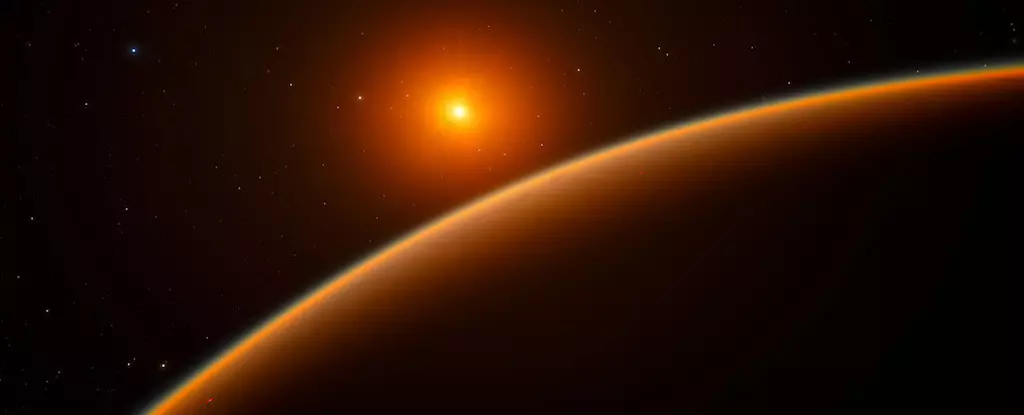The quest to understand the composition and diversity of exoplanets—planets outside our solar system—has taken a remarkable turn with a groundbreaking study suggesting that Earth-like planets might be more ubiquitous across the Milky Way than previously thought. Recent research reveals the existence of a super-Earth orbiting at a distance indistinguishable from that of Jupiter in our solar system, thus challenging long-held beliefs. This revelation not only elevates our understanding of planetary formation but also adds a new layer of complexity to the intricate web of cosmic life.
Uncovering the Unexpected
Among the researchers analyzing the data, Weicheng Zang, an astrophysicist at the Harvard and Smithsonian Center for Astrophysics, highlights the significant finding: a super-Earth exists where only massive gas and ice giants were assumed to dwell. This discovery seems to suggest that the universe has a more complex demographic than scientists initially estimated. By integrating data from the Korea Microlensing Telescope Network (KMTNet), a trio of high-powered telescopes strategically placed around the globe, the research reveals not just a singular peculiar planet, but points to an underlying trend that super-Earths may be less of an anomaly and more of a standard feature within our galaxy’s planetary landscape.
A Dive Into Gravitational Microlensing
The study hinges on the phenomenon of gravitational microlensing, a relatively arcane method for uncovering distant worlds. When a sufficiently massive object passes through the line of sight between a star and an observer, it can bend the light emanating from that star, resulting in a temporary brightness spike. This gravitational lensing acts like a cosmic magnifying glass—and while such occurrences are rare, they provide valuable insights into planetary existences that might otherwise evade our detection methods. The particular event studied, known as OGLE-2016-BLG-0007, marks a pivotal moment in microlensing research, revealing an unexpected array of planetary bodies.
Implications of the Research Findings
The breadth of this research is striking, featuring a dataset that triples the quantity of previously examined exoplanets, showcasing a variety of sizes and orbital characteristics. This expands the narrative around planetary formation, indicating that super-Earths inhabit not just the crowded inner orbits of stars but are equally capable of residing in the expansive reaches of space. As Zang articulated brilliantly, the study “shows that planets, especially super-Earths, in orbits outside the Earth’s orbit are abundant in the galaxy,” thereby emphasizing that our solar system may not be indicative of a universal standard for planetary arrangement.
Breaking Down Current Understandings of Habitable Zones
While the term “super-Earth” typically denotes mass rather than surface conditions, these findings offer tantalizing hypotheses regarding the conditions that these planets may harbor. As researchers like Jennifer Yee assert, the diversity among exoplanets could have significant implications for our understanding of habitability and planetary formation models. The traditional delineation around habitable zones, often relegating planets to only certain defined proximity ranges, appears increasingly inadequate.
Challenges of Cosmic Exploration
Despite the promising advancements, it’s crucial to acknowledge the challenges inherent in microlensing and exoplanet detection. Co-author Richard Pogge adeptly summarized the arduous nature of this research: the likelihood of locating a microlensing star event with a planet is exponentially lower than finding a celestial body alone. This reality underscores the necessity for continued innovation in astronomical techniques and reinforces the ever-present need for patience in uncovering cosmic secrets.
The Road Ahead: Further Research Needed
As compelling as these discoveries are, they lead us to more questions than answers regarding the formation and evolution of planetary systems. The researchers stress the importance of obtaining more data to solidify these initial findings and further unravel the enigma of super-Earths within the Milky Way. The journey through cosmic obscurity is fraught with uncertainty; however, the promise held within these unfolding narratives continues to inspire both scientific inquiry and public imagination.
In light of this enlightening research, the cosmos emerges not as an emptiness but as an array of possibilities—a veritable tapestry of diverse planets, some of which hold the keys to understanding life beyond Earth. As we look to the stars, the newly found abundance of super-Earths beckons humans to reconsider not only our place in the universe but the multitude of worlds that could share our fate.

